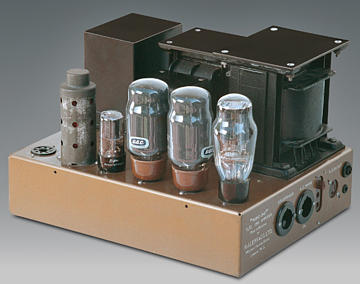Pardon my ignorance, but does a tube amp that measures THD less than 0.1% in the 20-20 band even exists? Regardless of cost.
Yes, Harold J, Leak broke that barrier in 1945.
Point One[edit]
In September 1945 the company released the first of the "Point One" series of amplifiers, so named because the
total harmonic distortion was 0.1% at rated output. This represented a major leap forward in accepted standards for high-performance amplifiers (with 2% distortion generally considered acceptable at the time). This first "Point One" amplifier was known as the Type 15, and produced 15 watts output, at 0.1% distortion, using push-pull
KT66 valves connected as
triodes, with 26 dB
feedback applied over four stages. The amplifier has a similar topology to the
Williamson amplifier published in
Wireless World in 1947.

LEAK TL/12 Point One Amplifier
In 1948, the original four-stage circuit was replaced with a three-stage design that was designated the TL/12. This amplifier had the same high performance at reduced cost, and it was responsible for establishing and securing the future of the company as a dominant player in the "hi-fi" boom of the 1950s and 1960s.
Subsequent amplifiers from the company all used the same circuit topology as the TL/12, but took advantage of newer more efficient power valves and the so-called "
ultra-linear" connection of the output stage to obtain higher power output with triode-like characteristics. These amplifiers included the TL/10, TL/25, TL/12-Plus, TL/25-Plus, TL/50-Plus, and the Stereo 20, Stereo 50 and Stereo 60
I owned a Leak TL 10 for many years. I gave it to my nephew some years ago, and he still has it in use.
They were beautifully made.
That was a far higher build quality, than we often have to put up with now.